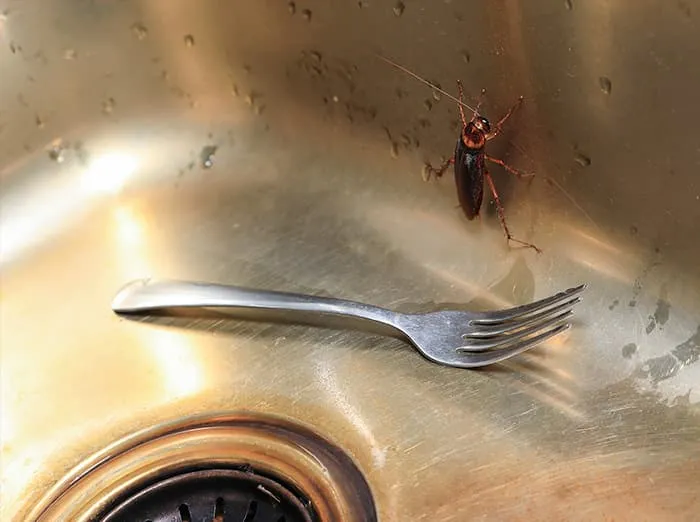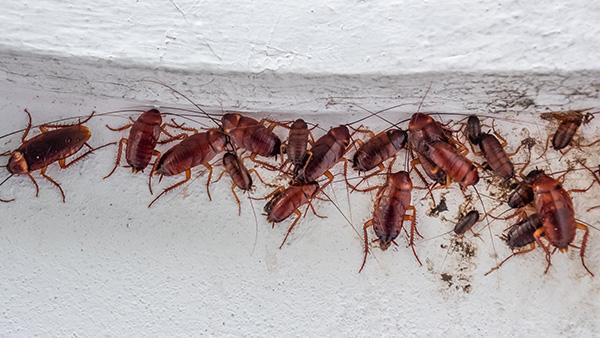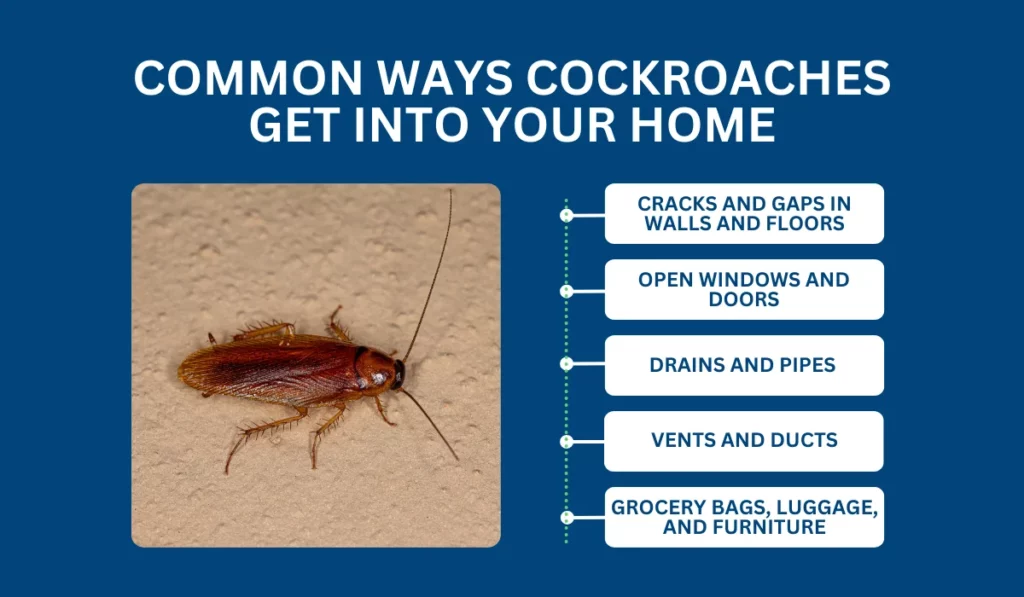Florida’s subtropical climate—featuring warmth, humidity, and short, mild winters—offers cockroaches nearly uninterrupted opportunities to feed and breed. In places like Melbourne, where homes, restaurants, and tourist spots coexist, roach sightings can escalate quickly if not tackled promptly. Once these resilient insects find food, water, and shelter, they can settle behind walls, under sinks, or in kitchen appliances, reproducing with remarkable speed. This service page outlines why cockroaches flourish in Florida, the red flags of an infestation, and why a professional cockroach exterminator is the most reliable way to reclaim a hygienic and pest-free space.
Whether you own a home in Melbourne or manage a business in Melbourne Beach, Cocoa Beach, Cocoa, Cape Canaveral, Merritt Island, or Rockledge, understanding roach behavior—and responding swiftly—helps you protect family members, guests, and your property from the contamination and stress of a growing infestation.
Why Cockroaches Thrive in Florida
Mild Winters
In colder states, frigid winters sharply reduce roach activity for months. Florida’s gentle cold season seldom dips below freezing, letting roaches stay active indoors and outdoors. Heated or air-conditioned interiors remain comfortable year-round, removing any natural pause in roach feeding or breeding cycles.
High Humidity and Abundant Moisture
Cockroaches need dampness to survive and reproduce. Florida’s frequent rain, irrigation systems, and inherent humidity guarantee water sources—leaky faucets, condensation under sinks, or open drains. Even modest moisture levels suffice for roaches to flourish, especially in kitchens or bathrooms.
Plentiful Food Supplies
From leftover crumbs and open trash bins to pet food bowls, Florida’s bustling suburban environments continuously offer roaches reliable meals. Residential neighborhoods, hotels, or eateries in areas like Cocoa Beach or Cape Canaveral can inadvertently sustain roach populations if spills or waste go unsealed.
Rapid Reproduction
A single female roach can produce multiple egg sacs (oothecae), each containing numerous embryos. Under Florida’s mild conditions, eggs hatch swiftly, and young roaches mature quickly. In just a few weeks, a small roach presence can balloon into a severe infestation if left unnoticed.
Multiple Cockroach Species
Florida hosts several roach types:
- German Cockroach: Small, reproduces rapidly, usually indoors near kitchens or bathrooms.
- American Cockroach: Sometimes called palmetto bugs, larger in size, often found in warm, damp spots like drains or utility tunnels.
- Smoky Brown Cockroach: Prefers outdoor, humid habitats but can wander indoors seeking food.
- Brown-Banded Cockroach: Often nests in drier, elevated areas, like upper cabinets or behind electronics.
Each species has unique preferences for moisture or harborages, underscoring the importance of identifying which roach type is present before treating.

Telltale Signs of a Cockroach Infestation
- Live Roaches, Especially in Daytime
- Roaches are nocturnal, so spotting them during daylight suggests a heavy colony has forced some into the open.
- Kitchens, bathrooms, and laundry areas are common hideouts where roaches scurry away when lights switch on.
- Roaches are nocturnal, so spotting them during daylight suggests a heavy colony has forced some into the open.
- Droppings and Smear Marks
- Roach droppings vary in size depending on species—German roach droppings resemble black pepper specks, while American roach droppings are larger.
- In moist areas, roaches may leave brownish smears on floors or walls.
- Roach droppings vary in size depending on species—German roach droppings resemble black pepper specks, while American roach droppings are larger.
- Egg Casings (Oothecae)
- Females produce bean-shaped capsules containing multiple eggs.
- Discovering these under sinks, near baseboards, or in hidden corners indicates active breeding.
- Females produce bean-shaped capsules containing multiple eggs.
- Musty or Oily Odors
- Large roach populations emit a distinct smell caused by pheromones and accumulated droppings.
- The more pronounced the odor, the bigger the likely colony.
- Large roach populations emit a distinct smell caused by pheromones and accumulated droppings.
- Chewed Packaging
- Cockroaches may gnaw on paper or thin cardboard food packaging, leaving ragged holes.
- Partially eaten food scraps or scattered crumbs can confirm roach foraging.
- Cockroaches may gnaw on paper or thin cardboard food packaging, leaving ragged holes.
- Occupant Complaints
- In multi-family dwellings, occupant reports of seeing roaches or finding droppings hint at building-wide issues.
- Quick property management action prevents further tenant dissatisfaction or potential health code infractions.
- In multi-family dwellings, occupant reports of seeing roaches or finding droppings hint at building-wide issues.
Risks of Ignoring Cockroaches
Disease and Contamination
Roaches scuttle through sewers, dumpsters, or decaying organic matter, collecting pathogens on their legs and bodies. As they crawl across dishes, utensils, or countertops, they deposit bacteria and germs, raising the likelihood of food poisoning or gastrointestinal illnesses.
Allergen Triggers
Roach droppings, shed skins, and saliva produce allergens associated with asthma attacks or respiratory irritation, especially in children or sensitive occupants. Untreated infestations can elevate allergen levels in enclosed areas.
Rapid Population Growth
Overlooking the first roach sightings invites a bigger infestation. Female cockroaches lay multiple oothecae, each releasing numerous roaches that mature swiftly. A few roaches can multiply into dozens or hundreds in just weeks or months.
Property and Reputational Harm
Business owners—particularly those in dining, lodging, or retail—risk negative customer reviews or health department scrutiny if roaches appear. Homeowners, similarly, face embarrassment, occupant anxiety, or lowered property appeal if roaches overrun living areas.
Greater Treatment Costs
Allowing roaches to expand can necessitate multiple visits from exterminators, extensive insecticide usage, or occupant relocations for thorough application. Early detection and remediation typically mean fewer chemicals, less occupant disruption, and smaller bills.
Why a Professional Cockroach Exterminator Is Essential
Targeted Inspection
A cockroach exterminator investigates basements, crawl spaces, attics, kitchen corners, or bathroom fixtures to identify droppings, egg casings, or roach runways. Confirming the species leads to custom strategies—German roaches might need heavy kitchen-based baiting, while American roaches may require perimeter treatments.
Strategic Baiting and Spraying
Professionals deploy gel baits in corners or under appliances, luring roaches without broad-surface pesticide usage. Residual insecticides placed behind cabinets or in wall voids kill roaches crossing treated areas. This synergy curtails roach populations with minimal occupant exposure.
Insect Growth Regulators (IGRs)
IGRs block nymph roaches from maturing or reproducing, slashing future infestations. When combined with adulticide baits, IGRs hamper new eggs from fueling the colony. This approach outperforms random store-bought sprays in thoroughly breaking the roach life cycle.
Reduced Chemical Exposure
DIY attempts often over-spray living spaces. Professionals confine insecticides to high-activity zones—cracks, corners, or hidden damp spots—leaving occupant or pet areas less exposed. By following safety protocols, they preserve occupant well-being.
Follow-Up and Building-Wide Relief
If occupant sightings continue, re-check visits confirm leftover eggs or newly emerged roaches also meet lethal conditions. For multi-unit buildings, coordinated treatments across all apartments or floors typically stamp out roaches fully, avoiding partial solutions that let them rebound elsewhere.

Typical Methods for Cockroach Treatments
- Inspection and Species Identification
- Exterminators track droppings, egg cases, or smear marks around kitchens, bathrooms, or damp corners.
- Recognizing whether roaches are German, American, or another species directs bait choice, spray type, or dust applications.
- Exterminators track droppings, egg cases, or smear marks around kitchens, bathrooms, or damp corners.
- Gel Baits and Bait Stations
- Gel baits placed along roach pathways (under sinks, behind stoves) lure roaches to consume slow-acting poison.
- Tamper-resistant stations often used in more accessible areas, keeping children and pets safe.
- Gel baits placed along roach pathways (under sinks, behind stoves) lure roaches to consume slow-acting poison.
- Crack-and-Crevice Sprays
- Residual insecticides injected into baseboard gaps, cabinet joints, or hidden fixtures kill roaches crossing these surfaces.
- Limits occupant/pet contact by focusing on roach travel zones instead of open floor areas.
- Residual insecticides injected into baseboard gaps, cabinet joints, or hidden fixtures kill roaches crossing these surfaces.
- Insect Growth Regulators (IGRs)
- Mixed with adulticides or used alone to disrupt roach development cycles.
- Ensures newly hatched nymphs cannot become breeding adults, controlling population surges long-term.
- Mixed with adulticides or used alone to disrupt roach development cycles.
- Sanitation and Clutter Reduction
- Occupant-led efforts—sealing food in airtight containers, removing spills promptly, and discarding trash frequently—starve roaches of easy meals.
- Clearing clutter denies hidden resting sites, forcing roaches to cross treated zones.
- Occupant-led efforts—sealing food in airtight containers, removing spills promptly, and discarding trash frequently—starve roaches of easy meals.
- Exclusion Work
- Caulking or sealing cracks in walls, floors, or around plumbing lines denies roaches free movement or nesting pockets.
- Minimizing moisture (fixing leaks) also deters roaches.
- Caulking or sealing cracks in walls, floors, or around plumbing lines denies roaches free movement or nesting pockets.
- Re-Checks and Maintenance
- Post-treatment, technicians revisit in weeks or months to ensure roach numbers remain at zero.
- If occupant sightings persist, further baiting or new approaches finalize eradication.
- Post-treatment, technicians revisit in weeks or months to ensure roach numbers remain at zero.
Service Areas: Melbourne, Melbourne Beach, Cocoa Beach, Cocoa, Cape Canaveral, Merritt Island, Rockledge
Although roaches can appear anywhere in Florida’s mild winter climate, this page zeros in on Melbourne, a key city in Brevard County’s Space Coast region. Our cockroach exterminator solutions also extend to:
- Melbourne Beach: Coastal homes and short-term rentals can see roach spread via occupant movement or open-lidded trash bins by the beach.
- Cocoa Beach: A tourist hotspot with hotels, restaurants, and visitor traffic—prime for roach infiltration if left unchecked.
- Cocoa: Mixing older neighborhoods with newer expansions, each facing roach intrusions if occupant sanitation lapses or structural cracks remain.
- Cape Canaveral: A space and cruise hub attracting visitors year-round, inadvertently ferrying roaches along in luggage or shipping containers.
- Merritt Island: Suburban communities near canals or wetlands, where roaches thrive on moisture and leftover yard waste.
- Rockledge: One of the oldest cities in Brevard County, featuring historic districts with older wooden homes or unsealed structural gaps.
No matter the location, Florida’s climate keeps roaches active, emphasizing occupant vigilance and professional extermination to ward off recurring infestations.
Why Choose Us
Florida-Specific Expertise
We adapt recognized cockroach control solutions—baiting, IGRs, residual sprays—to coastal Brevard County conditions, factoring in occupant traffic, typical roach species, and local humidity. Our approach merges occupant sanitation improvements with targeted chemical strategies for prompt, enduring results.
Comprehensive Property Checks
Before treating, we map droppings, egg casings, or known roach runways behind stoves, fridges, or in damp corners. Understanding roach species—German vs. American, for instance—drives decisions on where to place baits or how to treat perimeter openings.
Balanced Product Usage
We apply regulated insecticides in cracks or corners roaches frequent, minimizing occupant or pet chemical contact. If occupant or staff sightings continue, we pivot quickly—adding or relocating baits or employing different residual insecticides.
Focus on Sanitation and Exclusion
Eliminating roaches also relies on occupant changes—like storing food properly, sealing garbage bins, or patching foundation gaps. By tackling the root causes of roach attraction, we reduce the need for repeated chemical interventions.
Follow-Up and Accountability
Because roach eggs may hatch weeks after initial kills, re-checking occupant sightings or re-inspecting traps ensures newly emerged roaches meet lethal conditions. This cycle cements a roach-free outcome in Florida’s roach-friendly environment.

Next Steps
Noticing roaches scurry when you turn on the lights, uncovering droppings near sinks, or worried about egg casings behind appliances? Contact us to learn more or schedule your service. Our cockroach treatments for Melbourne, Melbourne Beach, Cocoa Beach, Cocoa, Cape Canaveral, Merritt Island, and Rockledge unite in-depth property checks, precise bait and insecticide placements, occupant tips, and thorough follow-ups—erasing roaches swiftly and fortifying against future invasions.
Swift intervention minimizes contamination threats, occupant anxiety, and risk of major roach population spikes. Trust our Florida-oriented knowledge to isolate, eliminate, and continuously monitor roaches, preserving your home or workplace from these resilient pests—regardless of mild winter conditions or year-round humidity along the Space Coast.
Maintaining a Roach-Free Environment
After professional extermination, consistent occupant efforts prevent re-infestation:
- Secure Food and Trash
- Store cereals, grains, or pet kibble in durable containers.
- Keep trash cans sealed, empty them regularly, and rinse recyclables to eliminate residue.
- Store cereals, grains, or pet kibble in durable containers.
- Address Moisture
- Repair leaking faucets, pipes, or condensation around HVAC units.
- Roaches thrive in damp conditions, so keep bathrooms, kitchens, and basements well-ventilated.
- Repair leaking faucets, pipes, or condensation around HVAC units.
- Manage Clutter
- Roaches hide behind stacked boxes, newspapers, or old clothes.
- Using sealed bins and removing unnecessary items narrows hiding spots.
- Roaches hide behind stacked boxes, newspapers, or old clothes.
- Wipe Surfaces and Floors
- Sweep or vacuum crumbs, mop up spills promptly, and sanitize counters after meals.
- Even small leftovers can lure roaches from corners or yard edges.
- Sweep or vacuum crumbs, mop up spills promptly, and sanitize counters after meals.
- Check Entry Points
- Caulk gaps around utility lines, add door sweeps, and maintain window screens.
- Restrict roach movement between outdoor and indoor spaces, including shared walls in multi-unit housing.
- Caulk gaps around utility lines, add door sweeps, and maintain window screens.
- Pet Bowl Routine
- Remove pet food after feeding periods rather than leaving bowls out all night.
- Keep bowls clean, storing extra kibble in sealed containers away from floors.
- Remove pet food after feeding periods rather than leaving bowls out all night.
- Monitor, Re-check if Needed
- If you spot a roach or fresh droppings after treatment, contact your exterminator promptly for a potential re-check.
- Early re-intervention curbs minor emergences before they escalate into large colonies.
- If you spot a roach or fresh droppings after treatment, contact your exterminator promptly for a potential re-check.
By integrating occupant housekeeping—like strict food storage, repairing leaks, and daily cleaning—with specialized roach control solutions, property owners in Melbourne, Melbourne Beach, Cocoa Beach, Cocoa, Cape Canaveral, Merritt Island, and Rockledge guard against Florida’s year-round roach challenges. Whether it’s an older home or a modern condo, these strategies thwart roaches from gaining a foothold, ensuring a cleaner, safer living or working space.
